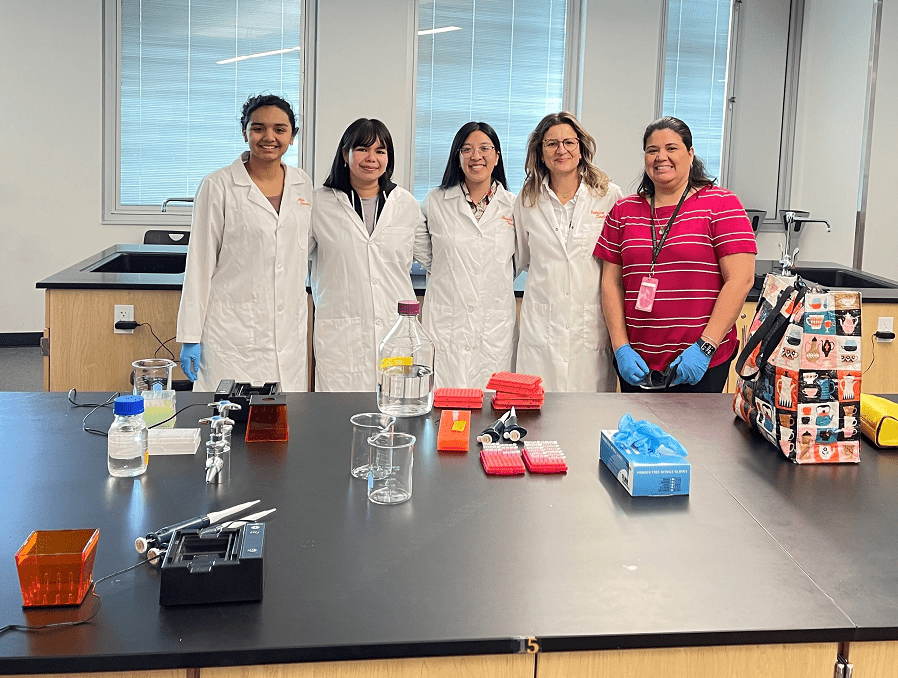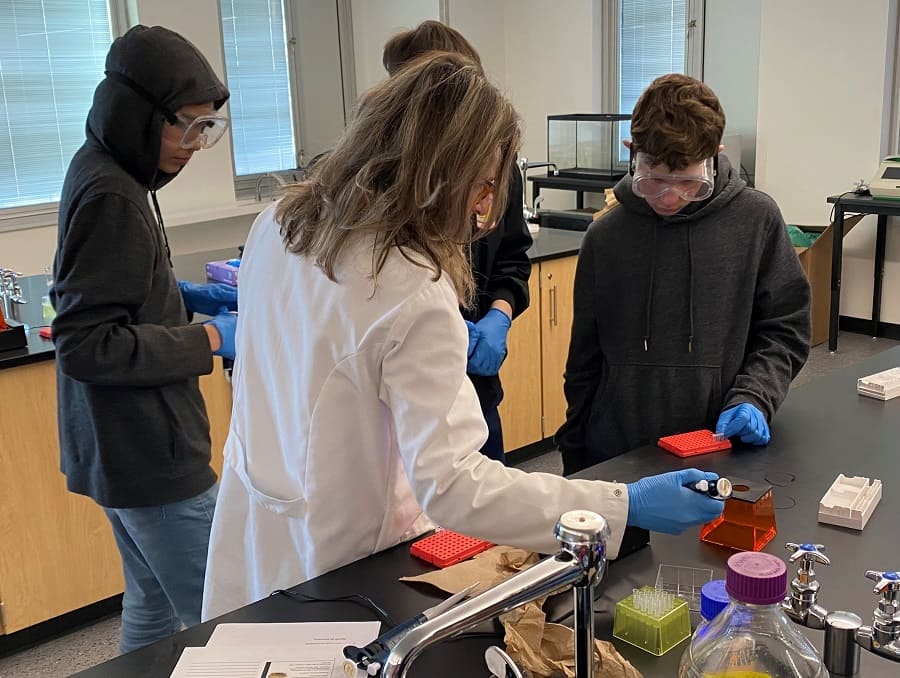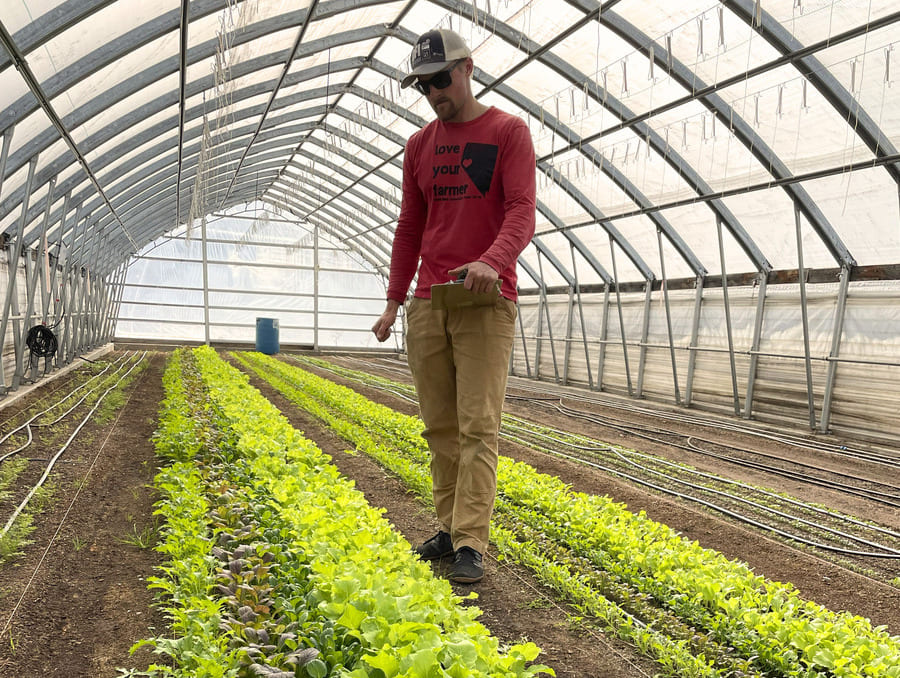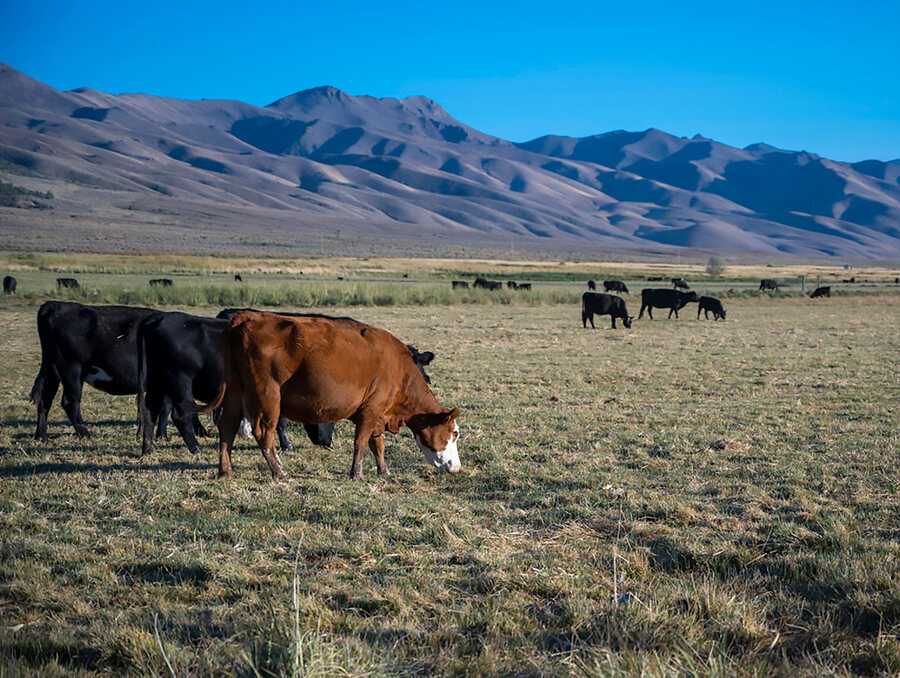This could be the beginning of a great partnership: high school teachers and students with the College of Agriculture, Biotechnology & Natural Resources at the University of Nevada, Reno, working together to interest young people in science careers.
The start of this effort was a weeklong lab in April led by Patricia Santos, an assistant professor with the Department of Biochemistry & Molecular Biology at the University, and Ana Herrera, a biology instructor with Hug High School in Reno for the past 10 years. The collaborative outreach effort may lead to more teaching partnerships in the future.
“One of my students put it really well,” Herrera said. “They were very appreciative of us bringing professionals in, so they can see themselves in those roles. For me as a teacher, that is my biggest goal: to have students exposed to different fields of science they may have never seen before.”
Santos agreed that she wanted more of a University presence in the public schools, especially in biotechnology and plant sciences. When she came up with the idea for a high school lab pilot program, she sought guidance from her friend Karla Hernandez, the director of Hispanic/Latinx community relations for the University.
In turn, Hernandez introduced Santos to Herrera. Hernandez and Herrera worked together when Hernandez was a tutor for Herrera in her biology classroom in 2005.
“Ana has always been open to collaborating with the University,” Hernandez said.
Bringing real-world science to students
With Santos and Herrera planning the curriculum, the first lab was set for 40 students in Herrera’s two Advanced Placement biology classes at Hug. Paid through Santos’ research budget, the emphasis of the lab was an experiment based on CRISPR, which stands for Clustered Regularly Interspaced Short Palindromic Repeat. This is a research technique to edit genomes and modify them without leaving traces of anything foreign, Santos explained.
It was a chance for students to truly understand the difference between a GMO (genetically modified organism) and a GEO (genetically engineered organism), often used interchangeably by nonscientists.
“The class was set up so you don’t have to have a Ph.D. in science to understand the differences,” Hernandez said. “This was really an open door for high school students to understand these terms, which they may see at the grocery store and would affect their lives that way.”
Another reason Santos chose to work with CRISPR is because it was engineered by two women, Jennifer Doudna and Emmanuelle Charpentier, who were given the 2020 Nobel Prize in Chemistry for their work. They were the first women scientists to win the chemistry prize and have become touchstones for younger women who may consider scientific work.
CRIPSR technology for the lab at Hug was used on an intentionally common subject – potatoes. Santos said that part of the lab was based on a case study conducted at the University in which potato genomes were edited using CRISPR to see if they could stay fresh longer.
“There are so many ways that biotechnology can help farmers,” Santos said. “If you think about the big picture, the United States potato industry is $4 billion per year, and about a third of that money is lost during storage. With CRISPR-additive potatoes, they can last longer.”
The lab also used other molecular techniques on potatoes, including the DNA/gene copying technique named PCR (polymerase chain reaction) and gel electrophoresis, which is used to separate molecules such as DNA or proteins from samples.
Impactful results beyond the lab
As part of the project, University students from the Department guided lab work with students in the Hug classrooms.
“They were delighted by the experience,” Santos said of her own students. “I brought in a very diverse group on purpose, so the high schoolers could see potential examples of themselves as part of the group.”
Herrera said that having college students there was a revelation for her students on possible career tracks, contrasting her own journey.

“It felt like a real lab experience to them,” Herrera said. “I remember being in college and walking into the lab and it being intimidating for me. I was super nervous. So, I’m happy that we get to give my students this experience and instill some confidence before they go to college.”
Santos added that fostering more love for science is an important part of her own role.
“It’s important to me to share what I know, these days as soon as possible, with students who may not have those opportunities,” she said. “It can really change their lives if they decide to go that route.”
As for the future, Santos is using her experience to apply this summer for a National Science Foundation grant. If the project is funded, Santos said she would use the funds to develop dual-credit biotechnology classes for high school students. Santos and Hernandez added that those classes could also be enticements for students to attend the University and major in biotechnology, biochemistry or the proposed plant sciences major.
“One of my goals is to bring high school teachers like Ana to my lab for four weeks to train them on developing these courses and incorporating them into the high school curriculum,” Santos said. “The grant would also pay for supplies for them, so they would have everything they need.”















